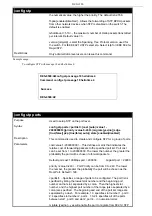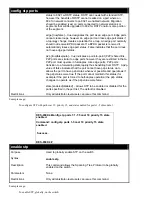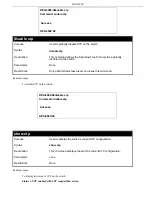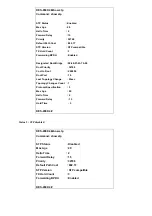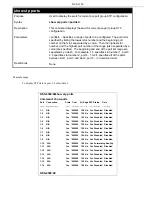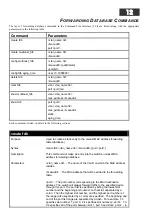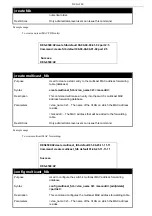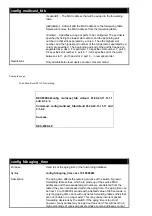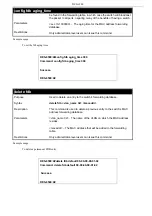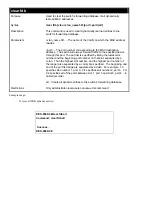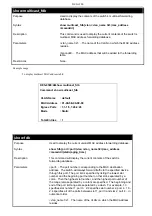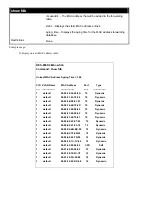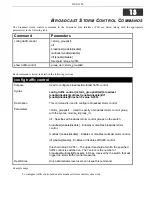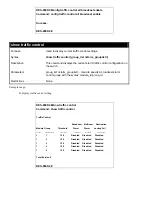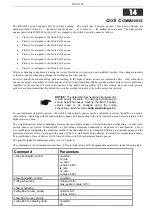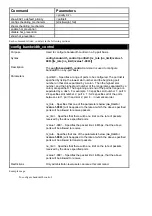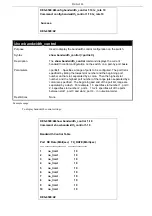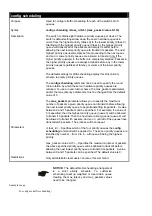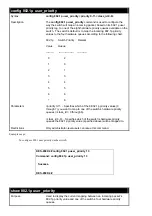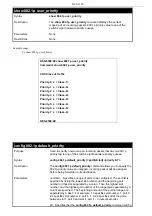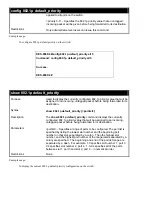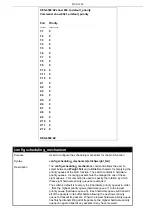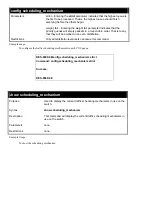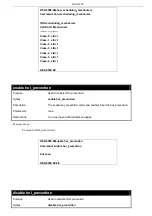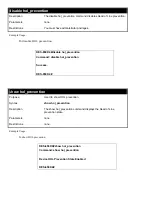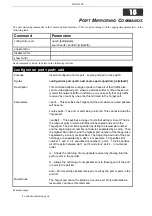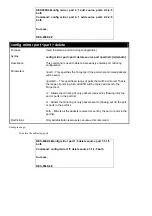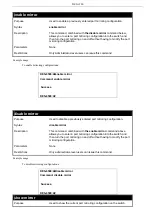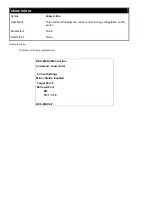
DES-6500
14
Q
O
S C
OMMANDS
The DES-6500 switch supports 802.1p priority queuing. The switch has 8 priority queues. These priority queues are
numbered from 0 (Class 0) — the lowest priority queue — to 6 (Class 6) — the highest priority queue. The eight priority
queues specified in IEEE 802.1p (p0 to p7) are mapped to the switch’s priority queues as follows:
•
Priority 0 is assigned to the Switch’s Q2 queue.
•
Priority 1 is assigned to the Switch’s Q0 queue.
•
Priority 2 is assigned to the Switch’s Q1 queue.
•
Priority 3 is assigned to the Switch’s Q3 queue.
•
Priority 4 is assigned to the Switch’s Q4 queue.
•
Priority 5 is assigned to the Switch’s Q5 queue.
•
Priority 6 is assigned to the Switch’s Q6 queue.
•
Priority 7 is assigned to the Switch’s Q6 queue.
Priority scheduling is implemented using two types of methods, strict priority and weight fair priority. If no changes are made
to the QoS priority scheduling settings the method used is strict priority.
For strict priority-based scheduling, packets residing in the higher priority queues are transmitted first. Only when these
queues are empty, are packets of lower priority allowed to be transmitted. Higher priority packets always receive preference
regardless of the amount of lower priority packets in the buffer and regardless of the time elapsed since any lower priority
packets have been transmitted. By default the switch is configured to empty the buffer using strict priority.
NOTICE:
The default QoS scheduling arrangement is
a strict priority schedule. To customize scheduling to
set up weight fair queue clearing, the MAX. Packets
values need to be changed using the config
scheduling command. See
config scheduling
below.
To use implement weight fair priority, the switch’s eight priority queues can be configured to reduce the buffer in a round-
robin fashion - beginning with the highest priority queue, and proceeding to the lowest priority queue before returning to the
highest priority queue.
The weighted-priority based scheduling alleviates the main disadvantage of strict priority-based scheduling
−
in that lower
priority queues get starved of bandwidth
−
by providing a minimum bandwidth to all queues for transmission. This is
accomplished by configuring the maximum number of packets allowed to be transmitted from a given priority queue and the
maximum amount of time a given priority queue will have to wait before being allowed to transmit its accumulated packets.
This establishes a Class of Service (CoS) for each of the switch’s four hardware priority queues.
The possible range for maximum packets is: 0 to 15 packets.
The commands in the Command Line Interface (CLI) are listed (along with the appropriate parameters) in the following table.
Command Parameters
config bandwidth_control
<portlist>
rx_rate
no_limit
<value 1-999>
tx_rate
no_limit
<value 1-999>
show bandwidth_control
<portlist>
config scheduling
<class_id 0-6>
max_packet <value 0-15>
show scheduling
config 802.1p user_priority
<priority 0-7>
<class_id 0-6>
show 802.1p user_priority
config 802.1p default_priority
<portlist>
all
Summary of Contents for TM DES-6500
Page 6: ...Register online your D Link product at http support dlink com register vi...
Page 33: ...DES 6500 Example usage To terminate the current user s console session DES 6500 4 logout...
Page 62: ...DES 6500 4 disable rmon Command disable rmon Success DES 6500 4...
Page 128: ...DES 6500 4 disable ipif s2 Command disable ipif s2 Success DES 6500 4...
Page 262: ...DES 6500 4 config command_history 20 Command config command_history 20 Success DES 6500 4...
Page 266: ......
Page 267: ...1...

